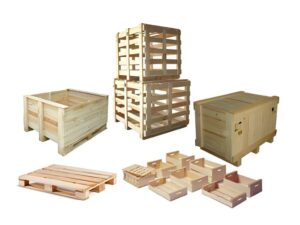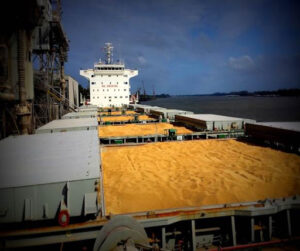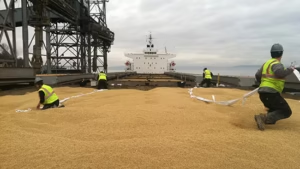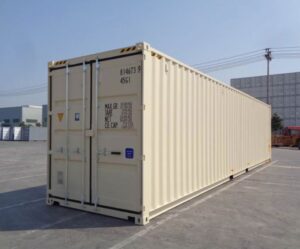Coco peat fumigation is a treatment process used to sterilize coco peat (also called coir pith or coir dust) before using it as a growing medium in agriculture, especially in nurseries or hydroponic systems. Fumigation or sterilization is important because raw coco peat can sometimes harbor:
- Pathogenic fungi (e.g., Pythium, Fusarium)
- Harmful bacteria
- Nematodes
- Insect eggs or larvae
- Weed seeds
🔍 What Is Fumigation of Coco Peat?
Fumigation refers to the process of applying chemical (or sometimes biological) agents to the coco peat to kill pests, pathogens, and weed seeds. It’s one of several sterilization or disinfection methods used.
🧪 Common Coco Peat Sterilization Methods
Here are the main types of fumigation or sterilization methods used for coco peat:
1. Chemical Fumigation
- Formalin (Formaldehyde 37–40%)
- Dosage: ~2–5% solution
- Procedure: Mix formalin with water and drench the coco peat. Cover with a plastic sheet for 3–5 days, then allow to air out for 10–15 days.
- Kills fungi, bacteria, nematodes.
- Important: Toxic and must be handled carefully with PPE. Requires aeration before planting to avoid phytotoxicity.
- Hydrogen Peroxide + Silver (e.g., H2O2-Ag)
- A safer and more eco-friendly option.
- Used in diluted form to sterilize coco peat.
- Kills bacteria and fungi.
- Chlorine-based Compounds (e.g., Calcium Hypochlorite)
- Often used in nurseries for disinfection.
- Not as effective against all fungi.
2. Heat Treatment (Steam or Solarization)
- Steam Sterilization
- Expose coco peat to steam at ~80–100°C for 30–60 minutes.
- Very effective and chemical-free.
- Solarization
- Moist coco peat is spread in a thin layer, covered with transparent plastic, and left under the sun for 1–2 weeks.
- Relies on heat to kill pathogens.
3. Biological Treatment
- Use of Trichoderma spp. after basic disinfection to colonize the coco peat with beneficial fungi that outcompete pathogens.
- Sometimes combined with partial chemical or heat treatments.
✅ Best Practices for Coco Peat Fumigation
- Pre-treatment: Wash the coco peat to remove salts (especially if it’s raw or unwashed).
- pH and EC Check: Ensure coco peat has acceptable pH (~5.5–6.5) and EC (<0.5 mS/cm) after treatment.
- Safety: When using chemicals like formalin, ensure good ventilation, PPE (gloves, mask, goggles), and proper disposal.
- Airing: After fumigation, always allow time for chemical residues to dissipate before planting.
💡 Recommendation
If you’re planning to sterilize coco peat at home or for a small nursery:
- Prefer steam treatment or hydrogen peroxide-based methods for safety.
- Avoid formalin unless you’re experienced and equipped for chemical handling.
- Consider adding Trichoderma viride or Trichoderma harzianum after sterilization to enhance disease resistance biologically.
Methyl Bromide Fumigation for Coco Peat
Methyl Bromide (CH₃Br) is a highly effective, broad-spectrum fumigant gas used to sterilize growing media like coco peat, soil, and substrates. It has been historically popular due to its ability to kill:
- Fungal pathogens
- Bacteria
- Nematodes
- Insect eggs and larvae
- Weed seeds
However, its use is now heavily restricted or banned in many countries due to its toxicity and ozone-depleting potential.
⚠️ Legal Status of Methyl Bromide
- Restricted/Banned under the Montreal Protocol (an international treaty to protect the ozone layer).
- Allowed only for quarantine and pre-shipment (QPS) uses in many countries.
- Check local regulations before using methyl bromide — unauthorized use can lead to serious legal consequences.
✅ Methyl Bromide Fumigation Procedure for Coco Peat
Note: Only trained professionals should handle methyl bromide, under controlled environments.
1. Preparation
- Coco peat should be moist but not wet (ideal moisture ~60–70%).
- Spread the coco peat in a sealed chamber or under a gas-impermeable plastic tarp on a concrete floor.
- Ensure proper gas-tight sealing.
2. Dosage
- Common dosage: 30–50 g/m³ depending on temperature, target pests, and exposure time.
- Temperature requirement: Minimum ~15°C (more effective at 20–30°C).
3. Fumigation Duration
- Exposure time: 12–24 hours.
- After exposure, ventilate thoroughly for at least 24–48 hours or until methyl bromide levels are undetectable.
4. Post-Treatment
- Allow coco peat to air out completely to avoid phytotoxic effects.
- Test for any residue before use.
- Adjust moisture, EC, and pH as needed before planting.
⚠️ Safety Precautions
Methyl bromide is:
- Highly toxic to humans — can cause respiratory, neurological, and systemic effects.
- Colorless and odorless, often mixed with a warning agent (chloropicrin) for safety.
- Requires:
- Full PPE (respirators, gloves, sealed suits)
- Trained personnel
- Proper ventilation and monitoring equipment
- Warning signs and restricted access to the fumigation area
✅ Advantages of Methyl Bromide Fumigation
- Very effective at sterilizing large volumes of coco peat quickly.
- Penetrates deeply and uniformly.
- Eliminates nearly all types of pests and pathogens.
Disadvantages
- Environmental hazard (ozone layer depletion).
- Highly toxic and dangerous if mishandled.
- Increasingly unavailable or illegal in many regions.
- Residual toxicity requires extended aeration before use.
- Expensive and not practical for small-scale or home growers.
Alternatives to Methyl Bromide
Given the health and environmental concerns, most commercial producers now use:
- Steam sterilization (most common)
- Hydrogen peroxide + silver (eco-friendly)
- Formalin fumigation (regulated but available)
- Trichoderma or biological treatments after mild disinfection
📝 Summary Table: Coco Peat Fumigation Methods
| Method | Effective Against | Safety Level | Legal Use | Comments |
|---|---|---|---|---|
| Methyl Bromide | All pests, pathogens, seeds | ❌ Very toxic | ❌ Banned in many areas | Industrial use only |
| Formalin | Fungi, bacteria, nematodes | ⚠️ Moderate | ✅ Regulated use | Requires airing |
| Hydrogen Peroxide + Ag | Bacteria, fungi | ✅ Safer | ✅ Allowed | Eco-friendly |
| Steam | All organisms (heat-sensitive) | ✅ Safe | ✅ Widely used | No residue |
| Solarization | Fungi, some seeds/insects | ✅ Safe | ✅ Natural | Climate dependent |
✅ Final Recommendation
- For most growers, steam treatment or eco-friendly chemicals offer a much safer and sustainable solution.
- Always follow local regulations and safety protocols.







